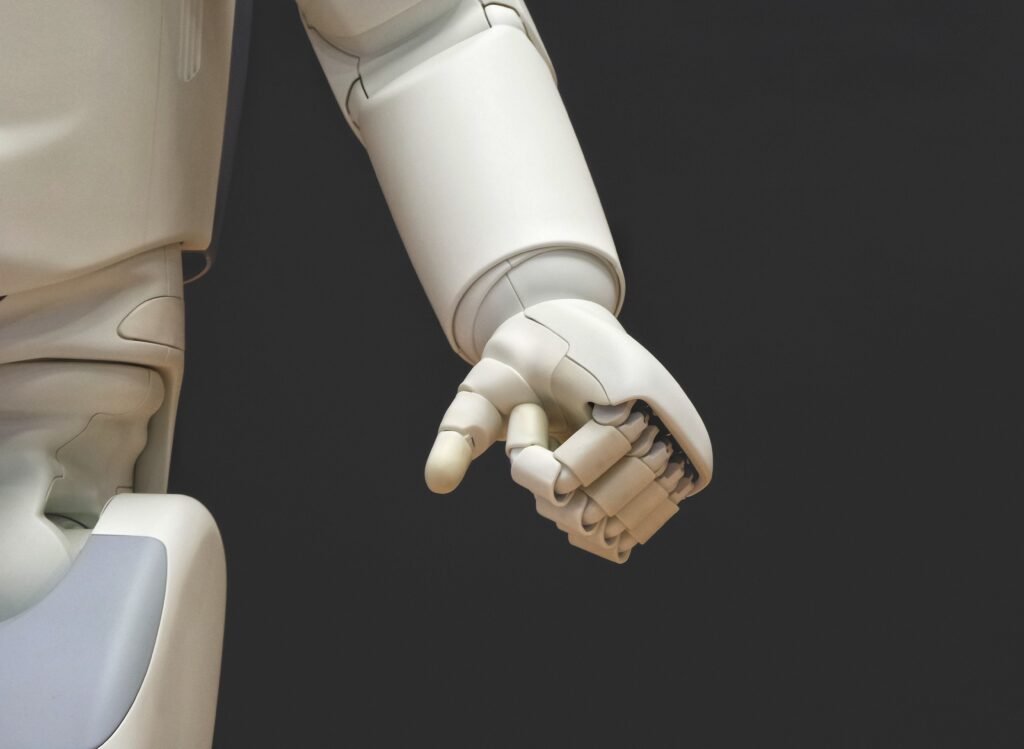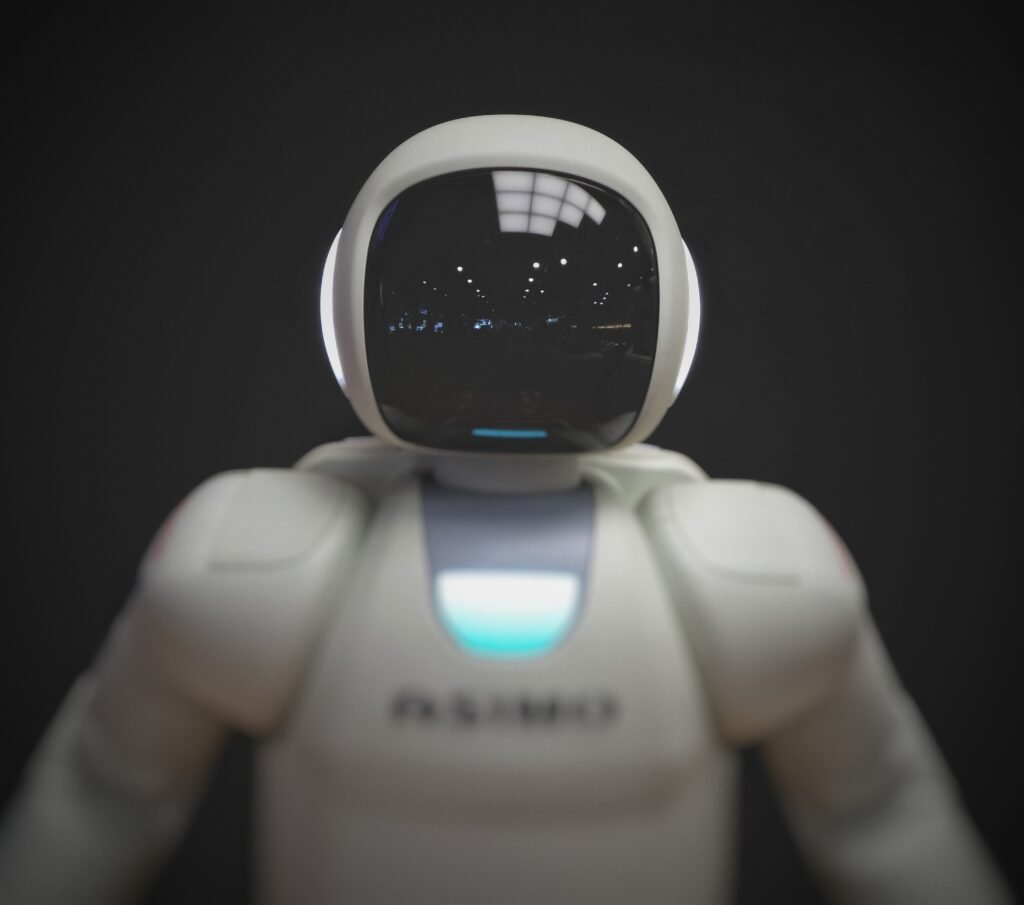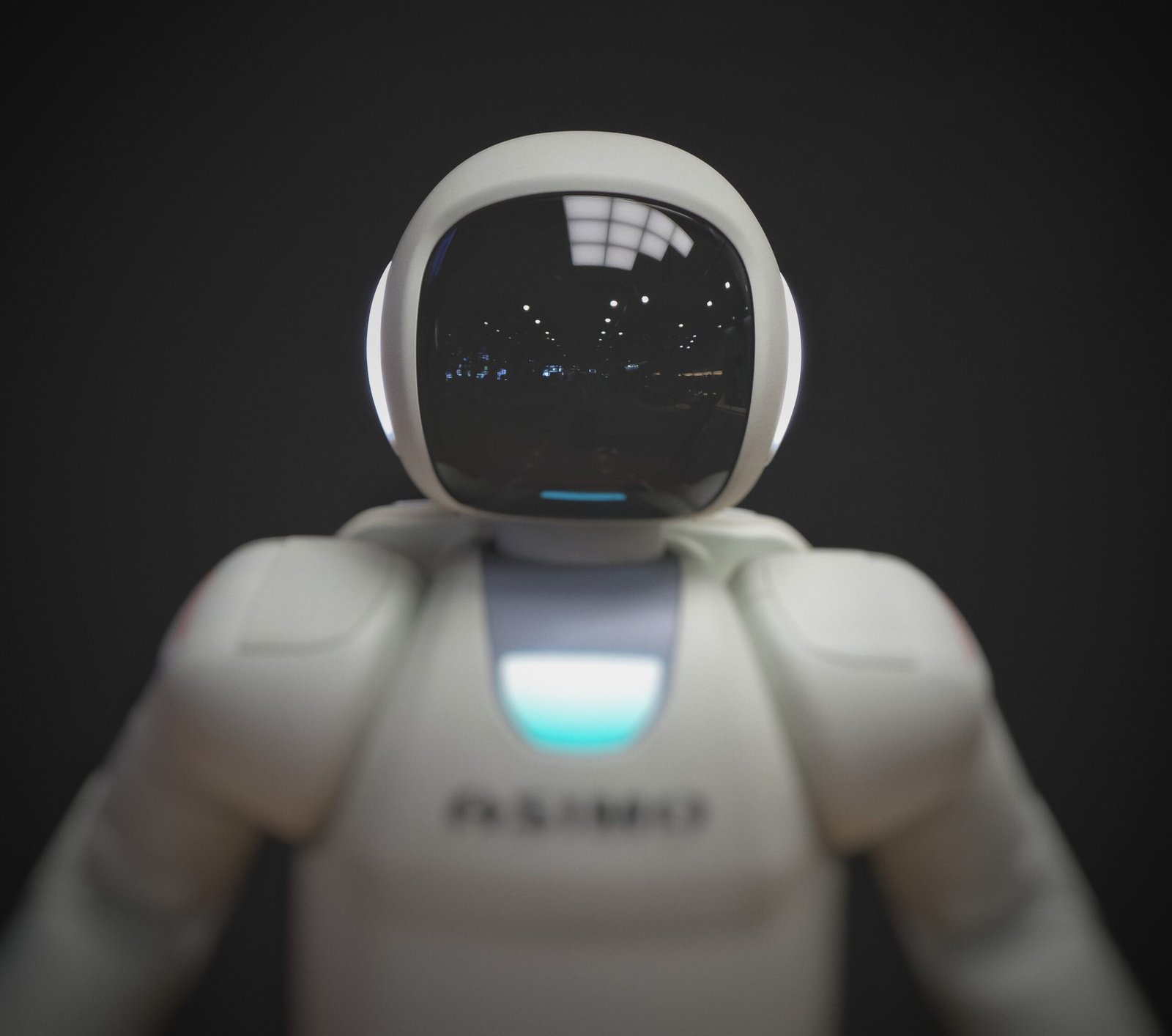Artificial Intelligence is revolutionizing the world as we know it, and you might be wondering why it’s such a big deal. Well, let’s take a moment to explore the incredible possibilities that arise with the emergence of this technology. From enhancing productivity to improving healthcare, AI has the power to transform industries and make our lives easier and more efficient. So, join us in this exciting journey as we uncover the wonders of artificial intelligence and its endless potential.
The Definition of Artificial Intelligence

AI’s Broad Scope
Artificial Intelligence (AI) refers to the field of computer science that focuses on creating machines and systems that possess the ability to perform tasks that normally require human intelligence. It encompasses a broad range of techniques and approaches that aim to develop intelligent systems capable of interpreting and understanding data, making decisions, learning from experience, and adapting to new situations. AI has the potential to revolutionize various industries and domains by enabling machines to mimic human cognitive processes.
AI’s Multiple Approaches
There are several approaches to artificial intelligence, each with its own focus and techniques. Symbolic or rule-based AI involves programming machines with explicit rules and knowledge to solve problems. Machine learning is another approach, where algorithms are designed to enable machines to learn from data and improve their performance over time. Deep learning and neural networks, on the other hand, mimic the way the human brain works by using interconnected layers of artificial neurons to process and analyze vast amounts of data.
AI vs. Human Intelligence
Although AI has made significant advancements, it is important to recognize the differences between artificial and human intelligence. While AI systems can process and analyze data at incredible speeds and volumes, they lack the common sense and intuition that humans possess. Human intelligence incorporates emotions, creativity, and the ability to comprehend complex social dynamics, which are still challenging for AI systems to replicate. However, with advancements in AI, researchers are continuously exploring ways to bridge the gap between artificial and human intelligence.
The Evolution of Artificial Intelligence
Early Beginnings
The concept of artificial intelligence dates back to ancient times, with early examples found in Greek mythology and folklore. However, the formal study of AI began in the 1950s, when computer scientists like Alan Turing and John McCarthy laid the foundation for this field. McCarthy is credited with coining the term “artificial intelligence” and organizing the Dartmouth Conference in 1956, which marked the birth of AI as a research field.
Emergence of Machine Learning
In the 1980s and 1990s, there was a shift towards machine learning as the dominant approach in AI research. This was driven by advancements in computing power, the availability of large datasets, and the development of more sophisticated algorithms. Machine learning techniques, such as decision trees, support vector machines, and Bayesian networks, enabled machines to learn patterns, make predictions, and solve complex problems based on data.
Deep Learning and Neural Networks
The emergence of deep learning and neural networks in the 2010s brought about significant breakthroughs in AI. Deep learning models, inspired by the structure and function of the human brain, allow machines to process and analyze vast amounts of unstructured data, such as images, texts, and audio. Convolutional neural networks (CNNs) revolutionized image recognition, while recurrent neural networks (RNNs) enabled natural language processing and speech recognition. These advancements have propelled AI to new heights, enabling machines to perform complex tasks with unprecedented accuracy and efficiency.
Applications of Artificial Intelligence
In Healthcare
AI has the potential to revolutionize healthcare by improving diagnostics, personalized medicine, and patient care. Machine learning algorithms can analyze medical images, such as X-rays and MRIs, to detect diseases and anomalies with a high level of accuracy. AI-powered chatbots and virtual assistants can assist patients in triaging symptoms, providing self-care advice, and even monitoring chronic conditions. Additionally, AI can analyze large volumes of patient data to identify patterns and provide insights for personalized treatments and interventions.
In Finance
The finance industry has embraced AI to automate processes, enhance risk management, and improve customer experience. AI-powered algorithms can analyze vast amounts of financial data to detect fraud, assess creditworthiness, and predict market trends. Robo-advisors, driven by AI algorithms, provide automated investment advice to individuals based on their risk profile and financial goals. Natural language processing techniques enable sentiment analysis of news and social media data to make informed investment decisions.
In Transportation
Artificial intelligence is transforming the transportation industry through autonomous vehicles, traffic optimization, and logistics management. Self-driving cars, powered by AI algorithms, can navigate roads, detect obstacles, and make real-time decisions to ensure passenger safety. AI-based traffic management systems can analyze data from sensors, cameras, and GPS to optimize traffic flow, reduce congestion, and improve fuel efficiency. In the logistics domain, AI can optimize delivery routes, improve supply chain operations, and enhance last-mile delivery services.
In Manufacturing
AI has revolutionized the manufacturing industry by enabling automation, predictive maintenance, and quality control. Intelligent robots equipped with AI algorithms can perform repetitive tasks with high precision and efficiency, leading to increased productivity and reduced costs. Machine learning models can analyze sensor data from production lines to predict equipment failures and schedule maintenance proactively, minimizing downtime. Computer vision systems powered by AI can inspect products for defects, ensuring consistent quality and reducing waste.
In Customer Service
AI has transformed the customer service landscape through chatbots, virtual assistants, and sentiment analysis. AI-powered chatbots can provide instant responses to customer inquiries, enhancing the efficiency and scalability of customer support. Virtual assistants, such as Amazon’s Alexa or Apple’s Siri, can assist in a wide range of tasks, from finding information to controlling smart devices. Sentiment analysis techniques can analyze customer feedback and social media data to understand customer satisfaction levels, identify potential issues, and improve customer experience.
Impact of Artificial Intelligence on Industries and Society
Increased Efficiency and Productivity
Artificial intelligence has the potential to significantly improve efficiency and productivity across various industries. By automating repetitive and time-consuming tasks, AI frees up human workers to focus on more complex and creative endeavors. AI-powered systems can perform tasks faster and at a larger scale, leading to increased productivity and reduced costs. With the ability to process and analyze vast amounts of data quickly, AI enables organizations to make more informed decisions, leading to better outcomes and enhanced efficiency.

Improved Decision-Making
AI systems are capable of analyzing vast amounts of data and identifying patterns and trends that humans may miss. This ability to process and interpret complex data allows AI to provide valuable insights and recommendations, improving decision-making processes across industries. For example, in finance, AI algorithms can analyze market data to predict investment opportunities, enabling investors to make informed decisions. In healthcare, AI can analyze patient data to assist clinicians in diagnosis and treatment planning, leading to improved patient outcomes.
Job Displacement and Automation
While AI promises increased efficiency and productivity, there are concerns about job displacement and automation. As machines become more capable of performing tasks traditionally done by humans, certain jobs may become obsolete. However, history has shown that technology also creates new job opportunities. While some jobs may be replaced by AI, new roles will emerge that require human skills such as creativity, critical thinking, and emotional intelligence. The key lies in reskilling and upskilling the workforce to adapt to the changing job landscape brought about by AI.
Ethical Concerns and Bias
The rise of AI has raised ethical concerns around privacy, bias, and accountability. AI systems rely heavily on data, often collected from individuals, and there is a need to ensure that this data is handled responsibly and with consent. Concerns also arise with regard to bias in AI algorithms, which can perpetuate unfairness and discrimination. Additionally, the question of accountability arises when AI systems make decisions that impact individuals or society at large. To address these concerns, ethical guidelines, regulations, and transparency in AI development and deployment are crucial.
Ethics and Bias in Artificial Intelligence
The Need for Ethical Guidelines
In the rapid development and deployment of AI, it is essential to establish ethical guidelines to ensure that AI systems are developed and used responsibly. Ethical guidelines provide a framework for addressing concerns such as privacy, transparency, accountability, and fairness. These guidelines emphasize the need to consider the potential societal impact of AI applications and encourage developers to prioritize human values and well-being. By adhering to ethical guidelines, organizations can mitigate the risks associated with the use of AI and promote trust and acceptance among users.
Addressing Bias in AI Algorithms
One of the critical concerns in AI is the potential bias present in algorithms and datasets used for training. Bias can arise from various sources, including skewed training data, incomplete or biased annotations, or even unintentional human biases in algorithm design. To address bias, it is important to ensure diverse and representative datasets, rigorous testing and evaluation of algorithm performance, and ongoing monitoring of AI systems to identify and correct biases. Collaboration between AI researchers, domain experts, policymakers, and affected communities is vital to address bias and promote fairness in AI applications.
The Future of Artificial Intelligence
Advancements in AI Research
The field of artificial intelligence continues to evolve rapidly, driven by advancements in computing power, data availability, and algorithmic improvements. Ongoing research focuses on enhancing AI models’ capabilities, such as improving understanding of natural language, developing more efficient training methods, and advancing reinforcement learning techniques. The development of explainable AI aims to address the challenge of interpretability and transparency, enabling humans to understand and trust AI systems’ decision-making processes. As AI research progresses, the potential for breakthroughs and new applications is vast.

Integration with Internet of Things (IoT)
The integration of artificial intelligence with the Internet of Things (IoT) is expected to bring about significant advancements and innovations. IoT devices generate massive amounts of data, and AI can process and analyze this data to extract valuable insights and enable intelligent decision-making. AI algorithms can enhance the functionality of IoT devices by enabling real-time monitoring, predictive maintenance, and autonomous decision-making. This integration has the potential to revolutionize sectors such as smart homes, healthcare, transportation, and environmental monitoring.
AI and Robotics
Artificial intelligence and robotics are closely intertwined, with AI serving as the brainpower driving robotic systems. The combination of AI and robotics allows for the development of autonomous robots that can perceive, understand, and interact with their environment. This has promising applications in industries such as manufacturing, healthcare, agriculture, and space exploration. AI-powered robots can perform complex tasks with precision, adapt to changing environments, and work collaboratively with humans, augmenting human capabilities and improving efficiency.
AI Assistance in Everyday Life
Artificial intelligence has the potential to become an integral part of everyday life, assisting humans in various tasks and activities. Virtual assistants, powered by AI, can provide personalized recommendations, manage schedules, and control smart devices. Advanced natural language processing capabilities enable these assistants to understand and respond to human voice commands accurately. Additionally, AI-powered applications can enhance productivity, creativity, and entertainment, providing personalized experiences based on individual preferences.
Challenges and Limitations of Artificial Intelligence
Data Privacy and Security Risks
The proliferation of AI and its reliance on data raise concerns about data privacy and security. AI systems require access to vast amounts of data, often collected from individuals, raising questions about consent, data protection, and potential misuse. Organizations need to prioritize robust data privacy measures, such as encryption and anonymization, to ensure the protection of sensitive data. Additionally, there is a need to develop robust security mechanisms to prevent unauthorized access and attacks on AI systems that can have severe consequences.
Lack of Transparency and Interpretability
One of the challenges associated with AI is the lack of transparency and interpretability in AI models and algorithms. Deep learning models, for instance, are often considered black boxes, making it difficult to understand the reasoning behind their decisions. This lack of transparency can lead to a lack of trust and hinder the adoption and acceptance of AI systems. Researchers are actively working on developing explainable AI techniques to address this challenge, enabling humans to understand and interpret AI systems’ decision-making processes.
Emotional Intelligence and Creativity
Artificial intelligence has made tremendous progress in areas such as data analysis, pattern recognition, and decision-making. However, it still faces significant challenges in areas that require emotional intelligence and creativity. AI systems struggle to comprehend and express emotions, understand nuanced human interactions, and generate truly creative outputs. While AI can augment human capabilities in several domains, areas that rely heavily on emotional intelligence and creative problem-solving continue to require human intervention and expertise.
Existential Risks
As AI technology advances, concerns regarding existential risks have been raised. Speculations about AI surpassing human intelligence and becoming uncontrollable or having unintended adverse consequences have sparked debates regarding its potential risks. Ensuring AI systems are aligned with human values, developing robust safety mechanisms, and implementing responsible AI governance are essential to mitigate potential existential risks. Ethical considerations, public discourse, and ongoing research and collaboration among stakeholders will play a crucial role in addressing these risks.
The Role of Artificial Intelligence in the Workforce
Creating New Job Opportunities
While there are concerns about job displacement, artificial intelligence also has the potential to create new job opportunities. As AI automates repetitive and mundane tasks, it allows humans to focus on higher-value activities that require creativity, critical thinking, and emotional intelligence. New roles and job categories will emerge, such as AI trainers, data scientists, and AI ethicists, to support the development and deployment of AI technology. By harnessing the power of AI and human skills in tandem, organizations can unlock new possibilities and economic growth.
Enhancing Human Capabilities
Artificial intelligence can enhance human capabilities by augmenting human intelligence and skills. AI-powered tools and systems can assist humans in performing complex tasks, analyzing large amounts of data, and making informed decisions. For example, in healthcare, AI systems can assist physicians in diagnosing diseases and developing treatment plans, leading to improved patient outcomes. By leveraging AI’s capabilities, humans can become more productive, efficient, and innovative, leading to further advancements and improvements in various domains.
Collaboration between Humans and AI
The most promising future for artificial intelligence lies in collaboration between humans and AI systems. Humans possess unique qualities such as creativity, empathy, and ethical judgment that are challenging for AI to replicate. By collaborating with AI systems, humans can leverage AI’s analytical capabilities and automation to augment their decision-making and problem-solving processes. This collaboration requires a deep understanding of AI capabilities, transparent communication, and ongoing learning and adaptation to achieve the best outcomes.
Reskilling and Upskilling Workforce
With the advent of artificial intelligence, reskilling and upskilling the workforce become imperative to ensure individuals can adapt to the changing job landscape. As certain roles become automated, acquiring new skills and knowledge becomes essential to remain relevant in the job market. Governments, educational institutions, and organizations need to invest in programs and initiatives that provide opportunities for individuals to reskill and upskill. This includes training in areas such as data analysis, machine learning, human-AI collaboration, and ethical considerations in AI.
Ethics and AI Governance
Responsible AI Development
Responsible AI development involves considering the ethical implications, societal impact, and potential risks associated with AI. Organizations developing AI systems need to prioritize transparency, fairness, accountability, and privacy. This includes integrating diversity and inclusivity in the development process, conducting rigorous testing and evaluation, and ensuring ongoing monitoring and maintenance of AI systems. Responsible AI development requires collaboration among AI researchers, policymakers, industry experts, and affected communities to establish best practices and guidelines.
Accountability and Transparency
AI systems that impact individuals or society at large should be developed and deployed with a high degree of accountability and transparency. Organizations should be transparent about the capabilities and limitations of AI systems and be accountable for the decisions made by these systems. Disclosing the underlying algorithms, data sources, and decision-making processes can help build trust and understanding among users. Establishing mechanisms for feedback, audits, and redress is crucial to ensure accountability and address any unintended consequences or biases in AI systems.
AI Regulations and Policies
As artificial intelligence becomes increasingly integrated into society, there is a need for appropriate regulations and policies to govern its development and deployment. AI regulations should aim to protect individuals’ rights, ensure fairness and non-discrimination, and address potential risks. Governments and regulatory bodies should work in close collaboration with AI researchers and industry experts to develop comprehensive frameworks that balance innovation and public interest. These regulations should be adaptable and responsive to the evolving AI landscape to effectively address emerging challenges and concerns.
Conclusion
The evolution of artificial intelligence has brought forth significant advancements and transformative changes across various industries and domains. AI’s broad scope, multiple approaches, and potential applications have reshaped how we perceive and interact with machines. The impact of AI on industries and society has been profound, with increased efficiency and productivity, improved decision-making, and new job opportunities. However, AI also presents challenges and concerns, such as job displacement, bias, privacy risks, and ethical implications.
To harness the full potential of artificial intelligence, it is essential to prioritize ethics, transparency, and responsible development. Developing ethical guidelines, addressing bias in algorithms, and promoting transparency and accountability are critical steps towards ensuring the responsible and ethical deployment of AI. Collaboration between governments, organizations, researchers, and the wider public is vital to navigate the evolving landscape of artificial intelligence and to strike a balance between the benefits and challenges it brings. By embracing AI and its potential, we can shape a future where humans and machines work hand in hand to create a better, more intelligent society.






